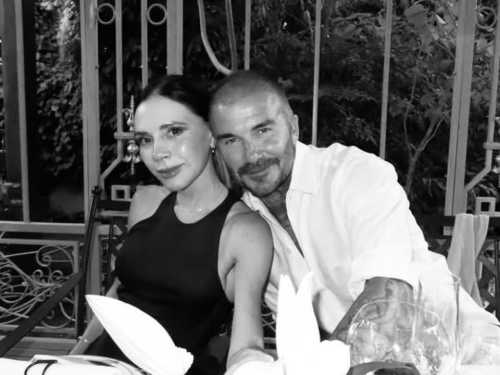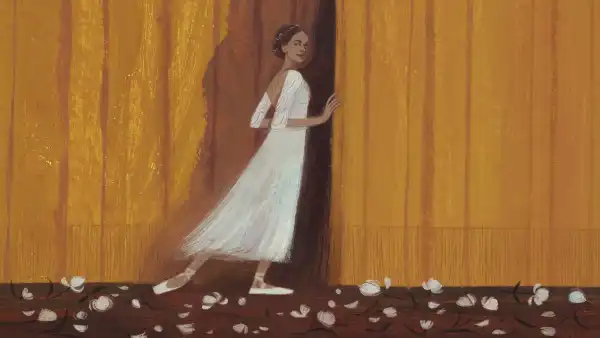
Reading is harder than it used to be. To some extent, that’s just part of being an adult. Determining what to read, carving out the time to do it, and sticking to a book inevitably grows more difficult as one gets older. There’s always something else to do, some chore to complete or task to finish. Our time also offers plenty of unique distractions: there’s always a new Netflix show to binge watch, a text or Facebook message beckoning from our phones, another news feed to scroll through.
In high school, I often read 20 books in a summer. In college, I would read four or five over Christmas break. Once “real life” began post-college, I still endeavored to get through between 30 to 40 books a year. But I also found it harder to attend to and finish books. When my brain felt tired, it was easier to watch TV or scroll mindlessly through Facebook. Like many readers, I’ve had to push back against my worst distractive tendencies in order to keep my passion for reading alive. Sometimes I’m successful, sometimes less so.
That said, having a child has changed my reading habits—and not necessarily for the worse. I read less “grownup” books, and spend a lot more time with A.A. Milne, Tasha Tudor, and Dr. Seuss. These authors, their wit and serendipity, have kept the joy and beauty of the written word alive, amidst a tiring and stressful journalistic year. Among the nursery rhymes and endless repetitions of Go Dog Go, I was able to squeeze in some other interesting—even delightful—reads. All these books are at least relatively new—if not new this year, then published in the past few years. At the end, I’ll also share a few books I re-read for their relevance and timelessness. Hopefully this list will prove both enjoyable and insightful for some of you.
Nonfiction
This Blessed Earth, Ted Genoways
The world of farming has changed drastically over the past 50 years. But has it changed for the better or are we headed for another farm crisis?
This is a question journalist Ted Genoways considers in this work of narrative nonfiction, which I reviewed for The Federalist earlier this year. In it, he tells the story of one particular farming family through whose eyes he considers larger patterns of stress and success, peril and promise. The book is perhaps a bit dense and dry for those who are not deeply interested in agriculture. But for those curious about food and farming, I’d recommend it.
The Marvelous Pigness of Pigs, Joel Salatin
To Christians interested in questions of ethical eating and food buying, I cannot recommend Salatin’s new book enough. Farmer and author Joel Salatin has long lived at the intersection of two worlds: that of passionate, often left-leaning environmentalists, and that of conservative Christianity. In this book, he strives to explain to a Christian audience why they should care about their food and how it’s produced—and why they should show greater concern and stewardship for their planet.
While Salatin’s vision for eating and living may seem radical to some, the ethic and philosophy behind it is approachable and applicable to a diversity of backgrounds and geographies. You can listen to my radio interview with Salatin and discussion of his book here.
Wendell Berry and Higher Education, Jack Baker and Jeffrey Bilbro
As I read Bilbro’s and Baker’s book this summer, it quickly became clear that Wendell Berry and Higher Education was about much more than the state of our universities and college students. Through their thoughtful consideration of home and community, ambition and place, Baker and Bilbro grapple with problems and questions that extend beyond college to the very heart of American society. As small rural communities suffer brain drain and post-industrial towns slowly succumb to collapse, this book, unlike so many others, suggests that the answer lies not in exodus, but in rootedness. Through their thoughtful and expert references to Wendell Berry’s work, the authors also help introduce their audience to timeless truths and poetic works on this subject. It’s well worth the read. (You can read my full review for TAC here.)
The Benedict Option, Rod Dreher
American Christians are living in an increasingly secular—and even, some would argue, hostile—culture. How then ought we to live? The Benedict Option considers this question in great depth, offering a clear-eyed look at the trends and philosophies that brought us to this moment and at the paths forward for thoughtful and devout believers.
Rod’s book generated a lot of interesting debate this summer—and considering the contentious and difficult conversations we’ve had of late regarding the fate of the Republican Party and the pro-life movement, I’d say this conversation is far from over. While some have argued that Dreher’s vision of America too apocalyptic, or that his prescription is either too exclusive or too cultish, it seems to me that the rule for living he presents in his work is both thoughtful and inspiring, and his warnings—especially those surrounding the decay and breakdown of evangelicalism and the church—are vital for today’s Christians to consider.
The Revenge of the Analog, David Sax
For years, we’ve been told that bookstores and print books are going extinct, that augmented and virtual reality are the future, that digitalized records and digitalized music are the only things that will exist 10 or 15 years from now.
But is that what people really want? This is the primary question that David Sax considers in The Revenge of the Analog, and his refreshing answer is no. From the revival of vinyl to a rebirth of Polaroid cameras, a board game renaissance to Moleskine dominance, Sax considers our widespread embrace of outdated, old, and analog items. He argues, respectfully, that perhaps the old and “real” will always be with us—not because there aren’t virtual alternatives, but because we as humans like to use our five senses. The book will be a fascinating read for most, but especially for those who have fallen in love with old analog items, who have bought a turntable or Polaroid camera, who have developed an affinity for board games or insist on taking notes by hand (despite the naysayers). You can read my full review of Sax’s book here.
Novels
Beartown, Fredrik Backman
Fredrik Backman’s A Man Called Ove delighted many readers. But this new novel from the surprise bestselling author offers us something quite different. Beartown considers the tribalism that can tear us apart, the hope and despair that often hold us hostage to the past, and the corruption that can destroy our future. All this in a book about hockey.
Beartown is suffering from a rural decline that many here in the states will recognize. Backman uses its plight to ask challenging questions about home and hope—and along the way offers scathing and justified rebukes to the competitive sporting cultures that often dominate town identities. We want to win—but at what cost? “What is a community?” Backman asks at one point in the book, before immediately answering, “It is the sum total of our choices.”
You can read my review of Beartown here.
Idaho, Emily Ruskovich
This is perhaps the most beautiful book I read this year. Ruskovich’s writing mirrors Marilynne Robinson (one of her mentors) and Alice Munro—it is poignant, graceful, surprising, and layered. The book considers Ann and Wade, a husband and wife living in the rugged mountains of northern Idaho. Ruskovich weaves a beautiful picture of their life together, their love and compassion, while also offering us glimpses of the haunting pain in their past. Some years ago, Wade underwent a fearful tragedy in which he lost his first wife and daughters. Now, Ann is trying to piece together the puzzle of this personal tragedy before it’s too late.
Unlike so many popular novels of late—Gone Girl, Girl on the Train, Big Little Lies—Ruskovich doesn’t insert deep malevolence or darkness into her story. It’s a sign of her strength as a writer, perhaps, that she doesn’t have to: the novel considers darkness and pain without becoming dark and painful to read. Ruskovich portrays the whole of the human person, beauty and failure, without succumbing to sinister stereotype. I’d highly recommend Idaho, and look forward to reading more from Ruskovich in the future.
Memoirs
The Shepherd’s Life, James Rebanks
In some ways, The Shepherd’s Life reminded me of J.D. Vance’s Hillbilly Elegy: Rebanks’ memoir considers the life of a small community that has become increasingly rare, the stubborn survival of its inhabitants despite widespread change in their world. He tells the story of his community and family through the clear-eyed but loving gaze of a son.
But Rebanks’ book also offers more hope, and more poetry, than Elegy did: due to the beautiful persistence of his tribe—the shepherds of England’s Lake District—Rebanks’ community has not died out, and the vision of farming it represents is not on the verge of extinction. Though little, it is fierce. And the beautiful fierceness of that life shines through Rebanks’ book. This is another great “crunchy con” read for those interested in sustainable agriculture and small-town community, as well as a beautiful look at an increasingly rare sort of community, one that has stayed strong despite everything.
Between the World and Me, Ta-Nehisi Coates
I was late to this book, which took America by storm when it came out in 2015, but I’m so glad I read it. Coates offers a deep and clear-eyed look at the world of West Baltimore where he grew up, and serves up some shattering and justified rebukes to the culture that helped curate the fear and loss he experienced as a boy and young man. It’s not just West Baltimore, he points out, that has suffered shootings, losses, unjust deaths: black communities have struggled against these things for centuries. And we as Americans have, more often than not, turned a blind eye, in order to preserve our vision of hope, our “American Dream.” While I don’t agree wholeheartedly with Coates on everything, I felt humbled by and thankful for this book’s discernment and clarity, its graceful storytelling and poignant observations. I consider it a must-read.
Rereading
The Unsettling of America, Wendell Berry
Last year marked the 40th anniversary of Berry’s classic book. It is always worth revisiting—not just because of its timeless truths, but because of its increasing relevance in today’s America. The trends Berry first predicted in the 1970s are coming to fruition in our time, which makes Berry’s work more enlightening (and perhaps even more frightening) with each year. But his beautiful observations—about hearth and home, land and community—are vital for today’s readers to consider.
The Death and Life of Great American Cities, Jane Jacobs
When Jane Jacobs wrote her classic work in 1961, America looked very different. Ours was a more analog, connected, communal country, and for this reason, Jacobs believed her observations and suggestions for urban planning were only necessary for cities, where most were strangers to those they passed on the street. But if Jacobs were to live in America today, she would see that same strangeness and separation played out on both a small and large scale. As we increasingly move from place to place, shirking our roots for novelties and career successes, our streets and towns have become increasingly strange and alien. Jacobs’s insights in Great American Cities are thus becoming more—not less—relevant to today’s America. We don’t just need them in New York City anymore. We need them on Main Street USA.
The Handmaid’s Tale, Margaret Atwood
Following Donald Trump’s inauguration and the creation of a new Hulu television series based on Margaret Atwood’s classic dystopia, The Handmaid’s Tale has been launched back into public discussion and prominence. Many (rather breathlessly) have associated Atwood’s fundamentalist society with Trump’s and Mike Pence’s right-leaning beliefs, and as a result, Handmaid’s Tale-inspired protests began to take place throughout the nation.
But Atwood’s classic novel is worth reading on its own merits, for its own thoughtful and incisive commentary. As I wrote in April, to associate Atwood’s vision of religious, political fundamentalism with right-leaning factions isn’t just a reduction of conservatism and the pro-life movement; it’s also a reduction of Atwood’s beautiful work. The Handmaid’s Tale is a worthy critique of fundamentalism and its reductive tendencies, but it doesn’t castigate Christianity so much as it castigates cultism, Gnosticism, and extremism. These are things that can skew and twist every religious and political movement (as Atwood herself seemed to agree on Twitter):
Totalitarianisms have gone by many names. Left, Right, and Other. https://t.co/lxHjbsmhi2
— Margaret E. Atwood (@MargaretAtwood) April 27, 2017
Atwood’s novel is sad and harrowing at points, but also beautifully written and poignant. I’d highly recommend it, along with Brave New World and 1984, as dystopian narratives that predict and portray our worst tendencies as humans, thus giving us clearer insights into who we are.
Gracy Olmstead is a writer and journalist located outside Washington, D.C. She’s written for The American Conservative, The Week, National Review, The Federalist, and the Washington Times, among others.
Sourse: theamericanconservative.com






